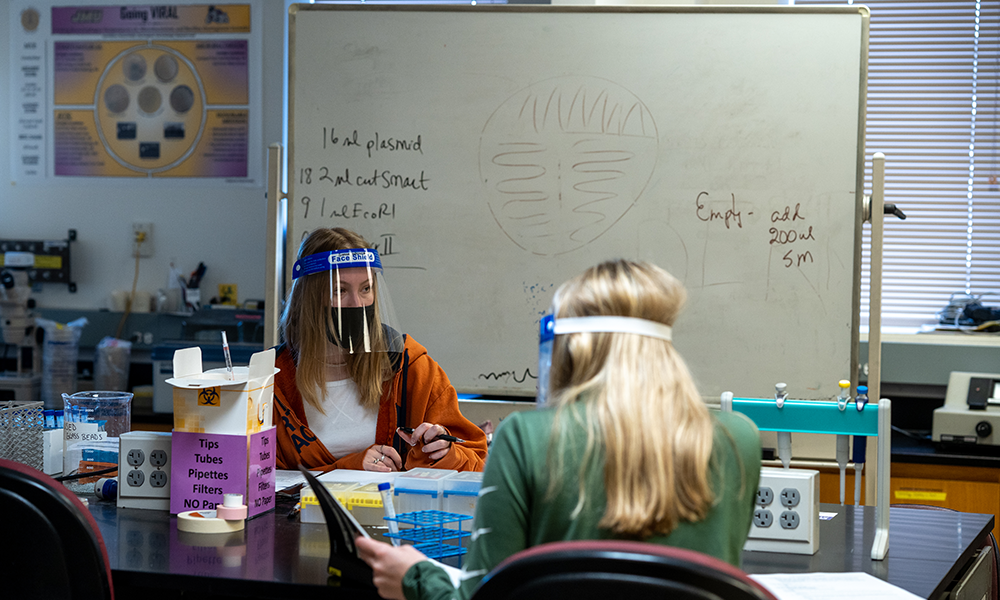JMU class assists federal, state labs with Salmonella research
JMU News
Harrisonburg, Virginia — Scientists with the Food and Drug Administration and Virginia’s Division of Consolidated Laboratory Services say a collaboration with James Madison University professor James Herrick and his students is providing critical data to improve food safety.
“This collaboration has helped expand our understanding of the diversity and movement of Salmonella in this important agricultural region in Virginia, helping inform our analysis of the risk this pathogen poses to the food supply,” said Rebecca Bell, a research microbiologist with the FDA.
Marc Allard, another FDA research microbiologist, said, “We greatly appreciate the work of Dr. Herrick and his students. Without this primary data and information, we don’t know how a pathogen contaminates produce, entering the food supply and making people sick.”
Herrick said the students collect Salmonella from area streams and provide samples to the state and federal labs. The Center for Disease Control and Prevention says Salmonella causes more foodborne illness than any other bacteria.
The state and federal labs “really wanted our isolates because they come from the environment, which they’re not used to sampling,” said Herrick, a biology professor whose research focuses on environmental microbiology and microbial genomics.
Students in the course — BIO 346, Laboratory in Bacterial Pathogenomics — first isolate and identify Salmonella and related pathogenic bacteria from streams in the Shenandoah Valley. The Virginia DCLS assists the class by sequencing the DNA of the isolates and sharing the raw data with the class. After getting this data, students assemble the isolates’ genomes (all of their genetic information) and look for antibiotic resistance and virulence genes. Because the research is taught as a class rather than within a university research lab, it boosts the number of biology majors who get to do authentic research.
“The purpose of this sort of class is to broaden the opportunities for undergraduates to do research who, for whatever reason, don’t get into a research lab,” Herrick said, adding that the training they get in pathogen microbiology and genomics is good preparation for their futures.
“These are the same methods that are being used to track COVID, for example. It is very timely from a public health standpoint,” he said.
Turner said an unintended benefit of the DCLS and JMU collaboration is that it has brought multiple JMU students with budding interest in public health science and bioinformatics into scientist training programs hosted by DCLS.
“Dr. Herrick’s passion for teaching and embracing new technologies is inspirational and uniquely provides students access to these systems early in their college experience,” she said. “The partnership with DCLS has opened the door to demonstration of real-world collaborations that are critical to scientific advancement, and it has the additional benefit of strengthening relationships between Virginia government agencies and public universities.”
In addition to the laboratory experience, the students are publishing articles in peer-reviewed journals. This past spring, the international journal Frontiers in Microbiology published some of the results from the class; it was co-authored by 11 undergraduate students and two graduate students, along with Herrick and Joseph Harsh, also a professor in the biology department. And this fall, CourseSource published an article authored by a former biology undergraduate that provides guidance for other universities to establish the class.
# # #
Contact: Eric Gorton, gortonej@jmu.edu, 540-908-1760
More information about James Madison University, including rankings and recognitions can be found at jmu.edu/about.
